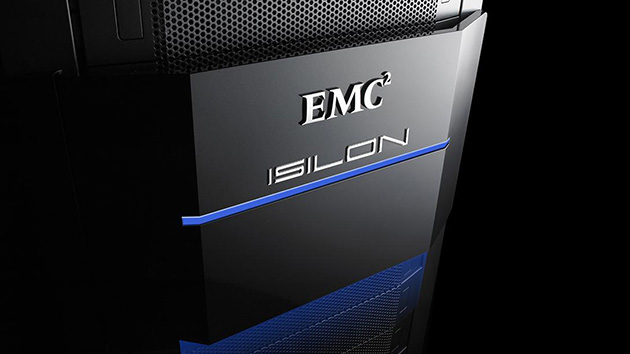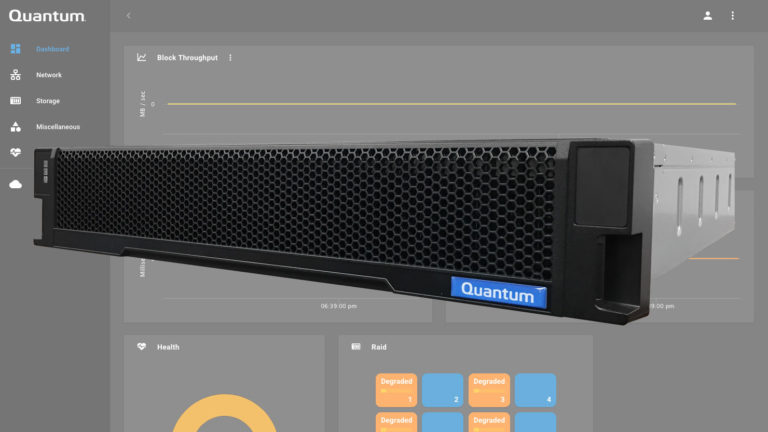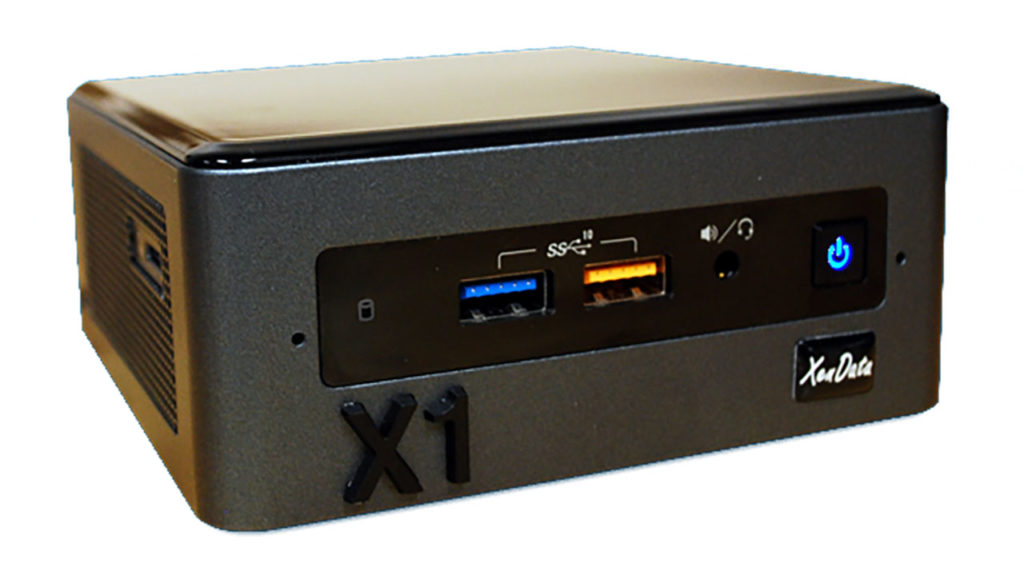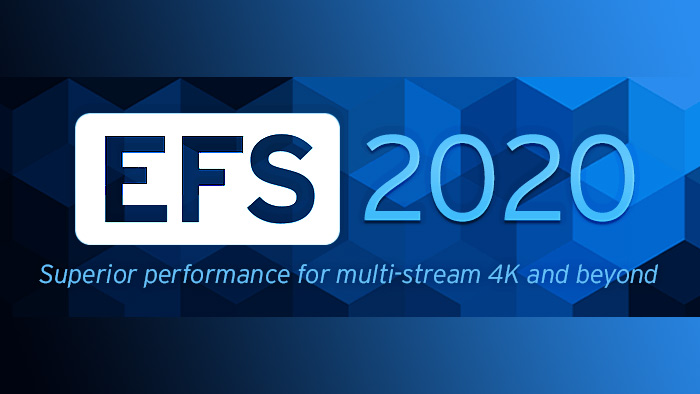
Sponsored Article: EMC Isilon CTO Tom Burns on the Lessons of IBC
Tom Burns, CTO of media and entertainment at EMC Isilon, takes the long view of technological change. Over his years engineering (and re-engineering) workflows from film to tape and beyond, he’s gained valuable historical perspective. He looks at short-term technical challenges from a birds-eye perspective, as the pieces come into place to enable more efficient and more collaborative efforts in media and entertainment production and post. As a veteran of Technicolor, Oprah Winfrey’s Oxygen Media, CORE Feature Animation and Alias Wavefront, vast technological change doesn’t scare him. In fact, he thrives on it. That’s why he had such a great time surveying the landscape at IBC 2015. In this piece, he discusses what he saw there, from the overarching industry trends to the quickly evolving needs of individual customers.
Technological change is happening at a very high level in our industry, and we’ve never gotten a better look at its impact on media and entertainment than at IBC 2015. We saw it in technical infrastructure, which is deep in the transition to IP delivery. We saw it in production workflow, which is becoming more collaborative, with production chains spanning the globe but working in harmony with multiprotocol access to the required data. And we saw it in the business models of content owners, which continue to evolve in order to give customers what they want, when and where they want it. It’s a time of enormous transformation, presenting exciting challenges and great opportunities for EMC Isilon and its customers.
It may help to put the market today in a historical perspective. Look at it from the point of view of telcos, who went through their own migration — from a capital intensive, technology-focused model to a user-centric delivery model — 15 years ago. I feel that telcos are very similar to post houses today. In the past, if you had a program to produce, you had to go to a post house, because that’s where the infrastructure was. Now, the common thread connecting telcos and post houses is they both want and need to move their services up the value chain. It’s no longer enough for a telco to just offer big pipes, or for a post house to offer a film lab. They both face technical and regulatory change driven primarily by the fact that end users are changing the way they consume media.
OTT Delivery, a New Gold Rush, and the Attention Economy
That is creating a real frenzy in the market, and OTT delivery has become a real market force. It's amazing. Everybody and their brother wants to put out an OTT service. There are around 1,000 linear TV networks in the U.S., and the ones who haven’t launched an OTT platform yet are planning to just as fast as they can. It’s almost a gold rush right now for viewer eyeballs — but it’s more than eyeballs. Do you remember when people started talking about the “attention economy?” You need to look at people’s time as the scarce resource. Am I going to program a show and hope an audience discovers it? Or am I going to winnow out all of the distractions so people don’t have to look for my show but are naturally inclined to find it, through second-screen experiences or social-media validation? The viewer has to be convinced that, yes, instead of going out to a bar and seeing a live band on a Friday night, it’s a better idea to stay home and binge on the latest series on Netflix.
That’s one of the things that the very large infrastructure providers are learning to do. Look at Amazon, which bought Elemental Technologies just before IBC. Elemental is one of the established manufacturers of transcoding systems, and transcoding is super-important because of the variety of platforms we consume our media on. Being able to transcode multiple versions of an asset in parallel is a tremendously exciting development, because you can have the UHD HEVC version of an asset down to an HTML5 streaming version of an asset with one common encode session, and a lot of the encoding providers are looking at being able to do multiple parallel file deliveries as part of their offering. That is absolutely a response to customer demand for mobile and tablet viewing. So you need the right transcoder, the right big-pipe provider, the right content aggregator, and the right back-end payment system, like Netflix or Amazon Prime. So when I compare the scramble to launch these OTT services to a gold rush, I do it with a specific metaphor in mind. Going out there and searching for nuggets of gold, you might strike it rich. Or you might go broke.
In media and entertainment, you’re looking for hits — those elusive nuggets of gold that advertisers used to call viewer eyeballs. But it’s more than just eyeballs. You’re looking for targeted eyeballs. In the broadcast model of advertising, you got eyeballs by blasting a message out in a lowest-common-denominator way. But now that’s all changing. For example, Facebook is reportedly allowing advertisers to pay only for viewers who scroll all the way down their page and see the complete targeted ad. There’s a new term for it: 100% in-view impressions. Targeted impressions are more valuable than ever, and that’s part of the analytics play.
This infrastructure transition away from video signals delivered over coax in real time to file-based and IP-network delivered content has tremendous implications in the way networks are built out. “OTT” is really a misnomer. It just means content is being delivered by packets rather than by RF energy. But packets aren’t as reliable as linear RF energy, so many of the technical innovations are about making packets as reliable as turning on your TV. The channels just need to be there. Look at HBO. They spent a ton of money and hired a good team to build their own OTT distribution platform and back end for HBO Go — and then they realized Major League Baseball already had the infrastructure and back office in place. So they outsourced their new standalone OTT service to MLB Advanced Media, or MLBAM. That got so much attention that MLB has recently approved the spin-off of BAM Tech as a separate company. From a technological point of view, that’s a seismic event. Just like in the gold rush, it’s turning out that the guys who really make the money are the people who supply the blue jeans and shovels.
Production Workflow Gets Agile
The move to IP networks is absolutely going to benefit everyone, including EMC Isilon — file-based storage works very well with IP network based delivery. But I did hear from customers at IBC who were looking for help solving an issue where clients have begun asking them for a different workflow. One thing that is important to enable the OTT gold rush is multiprotocol access to your data. To date, a linear workflow has meant that your production chain is broken down into islands. One island is doing the script, another island over here is doing the production, and one island is doing post-production. But what we’re seeing now is this continuous stream of re-rendering, supported by collaborative production methodologies uniting different geographical locations with people working 24 hours a day: India, L.A., Toronto, London. It’s like applying agile programming techniques to television. Every week, the common repo is updated with new material coming in from far-flung corners of the globe. It goes on and on until two days before release, when everything comes together in one last re-render and, boom, that’s what goes out to distro. Multiprotocol access to your data means you keep all of the data in one place, and everyone reads from and writes back to that common repo. It’s not just people FTP’ing files to one another. You need very sophisticated version-control systems. But the prospect of continuous re-rendering is driving television production now, and to me it looks similar to the techniques of agile software developers.
The MPAA is still a little hesitant about pure collaborative production in the cloud, but they did just release their supplemental guidelines for cloud production. And the Entertainment Technology Center (ETC), working out of the University of Southern California, has had a long-running project on collaborative production techniques. One of the really hard problems in computer science is simply naming things. Every asset manager has its own special way of doing Universal Unique Identifiers (UUIDs), as just one example. So I’m encouraged by the fact that a respected research body such as ETC, with its deep ties to the Hollywood production community, has released the Cinema Content Creation Cloud, or C4, global naming convention for collaborative production. Being able to accurately track all of the elements in a production — including graphics, storyboards, soundtracks, shots, looks, color-corrections, edit versions — with a comprehensive naming solution is really interesting, and we will be at SMPTE ATC later this month, talking with those guys to see how we can support it. The ultimate goal is to be a completely media-aware file system.
And global workflows present a unique pair of curves that cross each other: the countries where the labor is cheapest are the countries in which the telecommunications costs are the highest. Animal Logic, an Isilon customer in Australia, has opened up an expansion content-creation facility in Vancouver. They share a common data center located in Washington State, so they split the latency between the two sites. Very clever sysadmins have measured latencies and looked at network efficiencies and figured out the costs of placing their satellite offices in a country that has good tax credits, a good labor force, and good access to high throughput network bandwidth. By splitting the difference in labor costs and network throughput, and building a production pipeline that takes advantage of those facilities, they are able to do work in a number of different time zones — which is very efficient, given that their customers demand 24-hour production cycles.
To enable the new breed of collaborative workflow, EMC Isilon’s concept is to keep your data all in one place. We call it the data lake. You can access that data lake over a number of protocols: REST protocols and swift APIs for object access to your data, traditional file access to your data, and HDFS, which provides an analytics engine access to your data. That’s important, because it means you don’t have to move your data off to some chunk of direct-attached storage to do some analytics on it and then move the rendered product back to your primary storage. You keep it in the data lake and access it via different protocols. It saves you a ton of time, and it’s much more efficient in the long term — as the new workflow develops, it’s just a matter of adding a new protocol to the current Isilon product.
Evolving Profitable Business Models
Beyond the technical issues, changes in consumption have far-reaching effects on how content owners do business. Piracy will continue to be an issue. But when Gabe Newell, the managing director of videogame developer and distributor Valve Corporation, talks about piracy, he says it’s a customer service problem. Let’s say I’m a fan of Show X, but it airs on a network that I don’t subscribe to because it’s not available in Canada. My options are piracy or a VPN — which some networks wink at, and others actively disallow. If I don’t want to turn to piracy to watch Show X, I’m waiting for one of those 1,000 linear networks in North America to offer that show in a way that I can consume, no matter what my geographical location is, whether I’m at home or on the road.
For large content rights holders, the day-and-date release model has been an important innovation in combating piracy. They have been forced into it, but they have reacted. What’s really interesting is that the business model innovation has contributed to a change in the types of cultural products available to us. In Hollywood, for instance, you get $150 million blockbuster tentpole pictures — because day and date only works when you can guarantee a profit by releasing in all markets at once — and you get a tiny number of little independent pictures. The whole middle has disappeared. Where have the small, writerly “sleeper” pictures gone? To cable networks. It’s almost embarrassing how many quality television dramas are currently on the market. And Netflix and the other content aggregators of the world are taking advantage of that.
What does that mean for post? The popularity of high-quality, highly serialized television programming means a production company doing 12 hour-long episodes of TV might not be able to lock episode 1 until the entire story arc has been vetted. And nobody can size their production infrastructure for 12 full episodes multiplied by the three different series they may have in production at any one time. That’s a good case for on-demand infrastructure. It makes sense to bill customers on a utility model. Isilon has a feature coming out called Cloud Pools that will allow you to use the cloud as a tier. If you’ve got a show that’s mostly locked, so you need it off your working storage, you tier it out to the cloud. It could be an on-premises object store such as our Elastic Cloud Storage, or ECS, that’s less expensive than your main storage. You could think of production storage as cache — keep everything that all of the creative attention is focused on in cache and then, when you need to focus on the next episode, you tier the assets for the previous episode off to the cloud and load the new episode’s assets into your working storage. A lot of people are interested in being able to tier quickly, and an on-premises object store such as ECS, where you control your own networking costs, is less expensive for a content-creation company than a commercial service.
The More Things Change …
That should give you a pretty good picture of how the current transformations in the media and entertainment industry manifested in the exhibits and discussions going on at IBC last month. I’m sometimes asked how long it will be before we get through this transition to IP networks and OTT delivery, and I’d love to say it’s going to happen soon. Most of our customers in media and entertainment understand the vision for the next five years, and they're implementing strategy and technology to get to the implementation of that vison. But there’s a funny thing about technological change: we overestimate what's going to happen in the short term, and we vastly underestimate what's going to happen over the long term.
New technologies often start as hacks invented to solve one specific problem. A hack can become an entire industry. In the 1970s, Canadian cable TV companies were in a gray regulatory area. They captured U.S. signals that were unavailable to Canadians over the air and re-transmitted them over homebrew cable networks. And a cross-border regulatory framework had to quickly develop so that could occur legally, by paying a certain amount for re-transmission. That was back in the old days, before digital. And then, cable TV progressed into a closed, commercial behemoth. Remember the “walled gardens” of 15 years ago? The cable company wanted to protect you from the wild and wooly Internet. And once again, the industry evolved. Cable companies are now the way most people get access to the Internet. A closed system that gets really big usually gets broken apart by regulation or technology, and then the cycle begins again. That’s what we’re seeing now. Right now, there are lots of saucy little apps exploring different niches in the ecosystem. Somebody is going to hit the winning formula, and then the cycle is going to begin again.
Crafts: Storage
Topics: Sponsored Content cloud collaboration emc isilon ott delivery production workflow storage
Did you enjoy this article? Sign up to receive the StudioDaily Fix eletter containing the latest stories, including news, videos, interviews, reviews and more.










